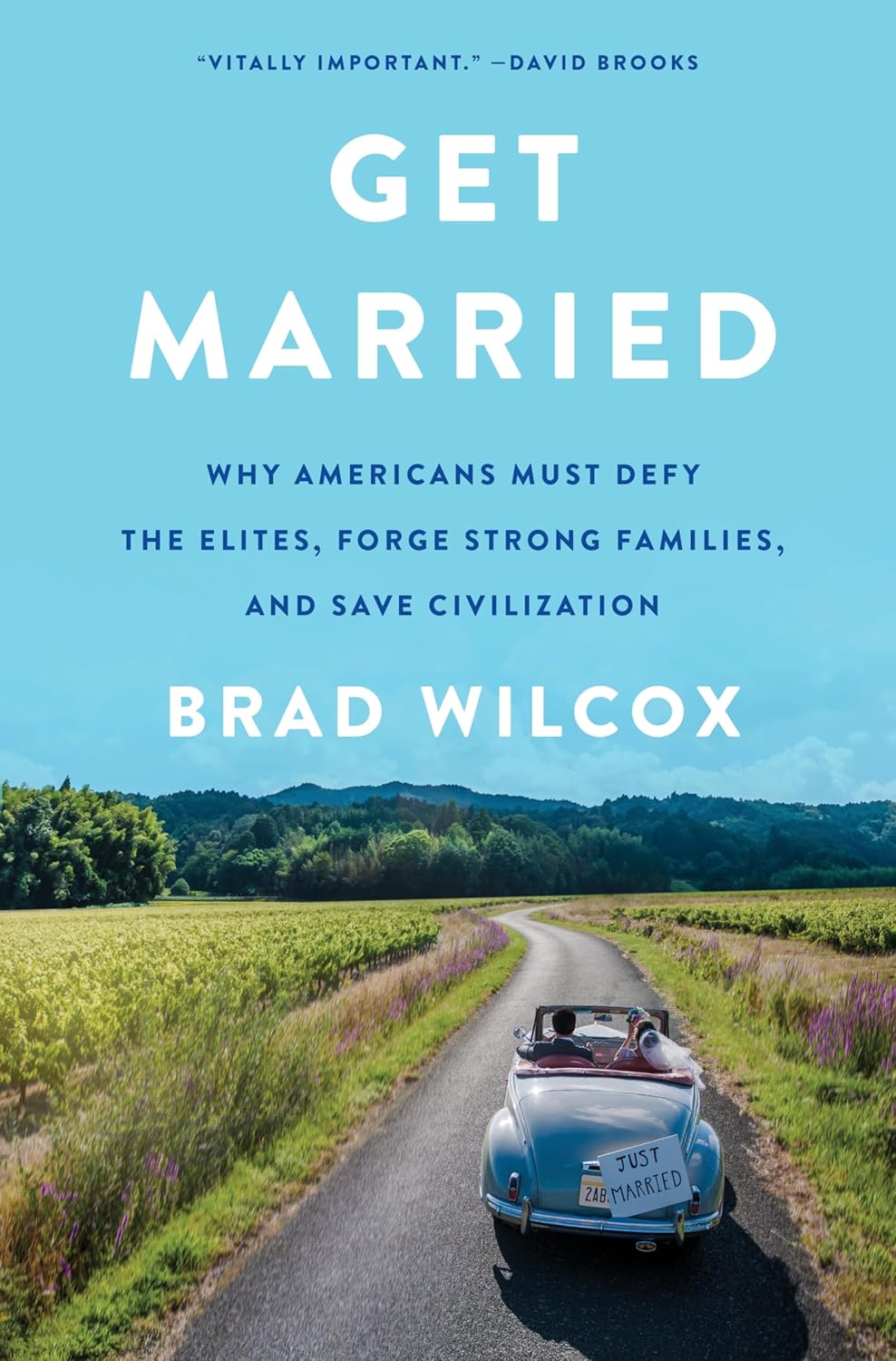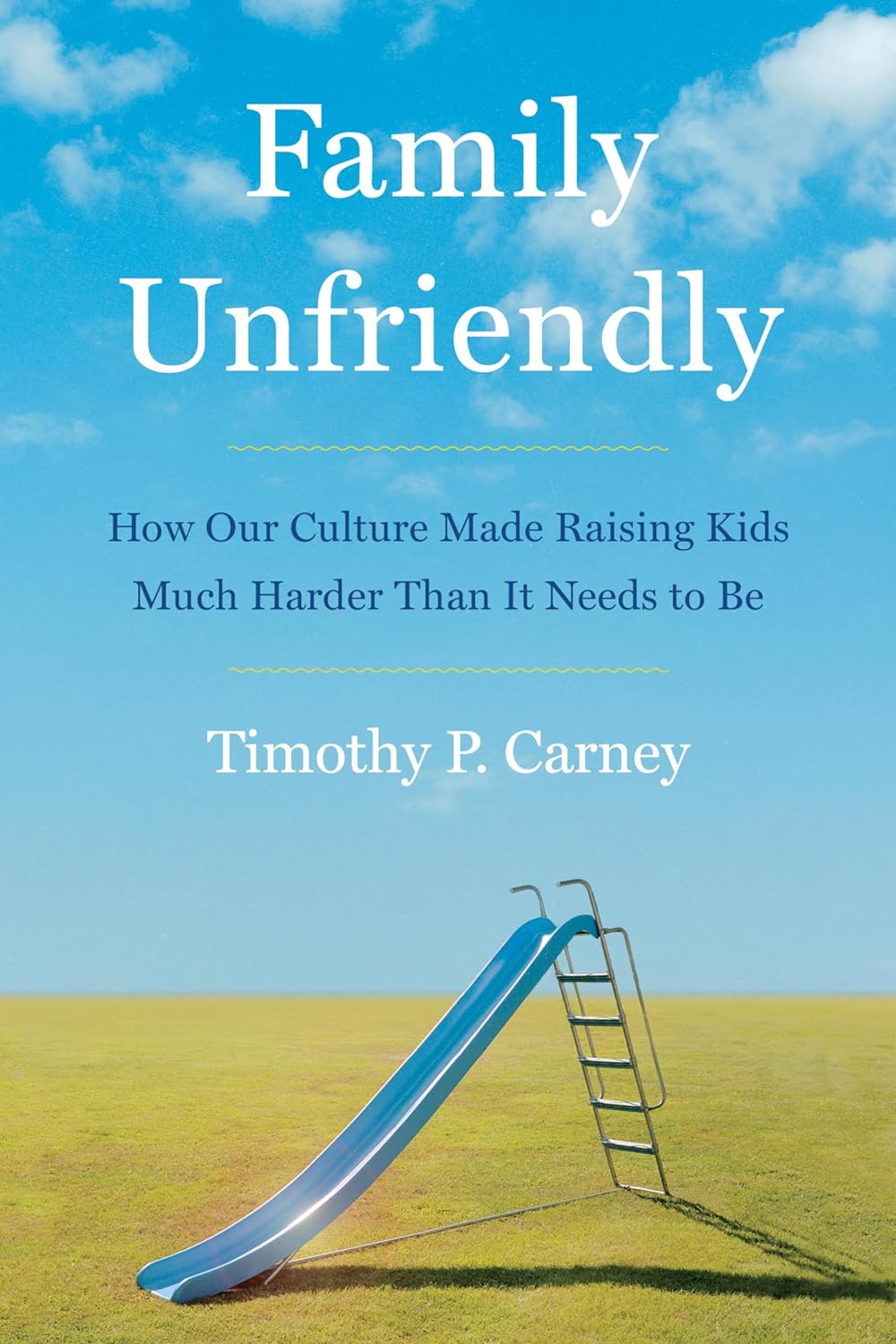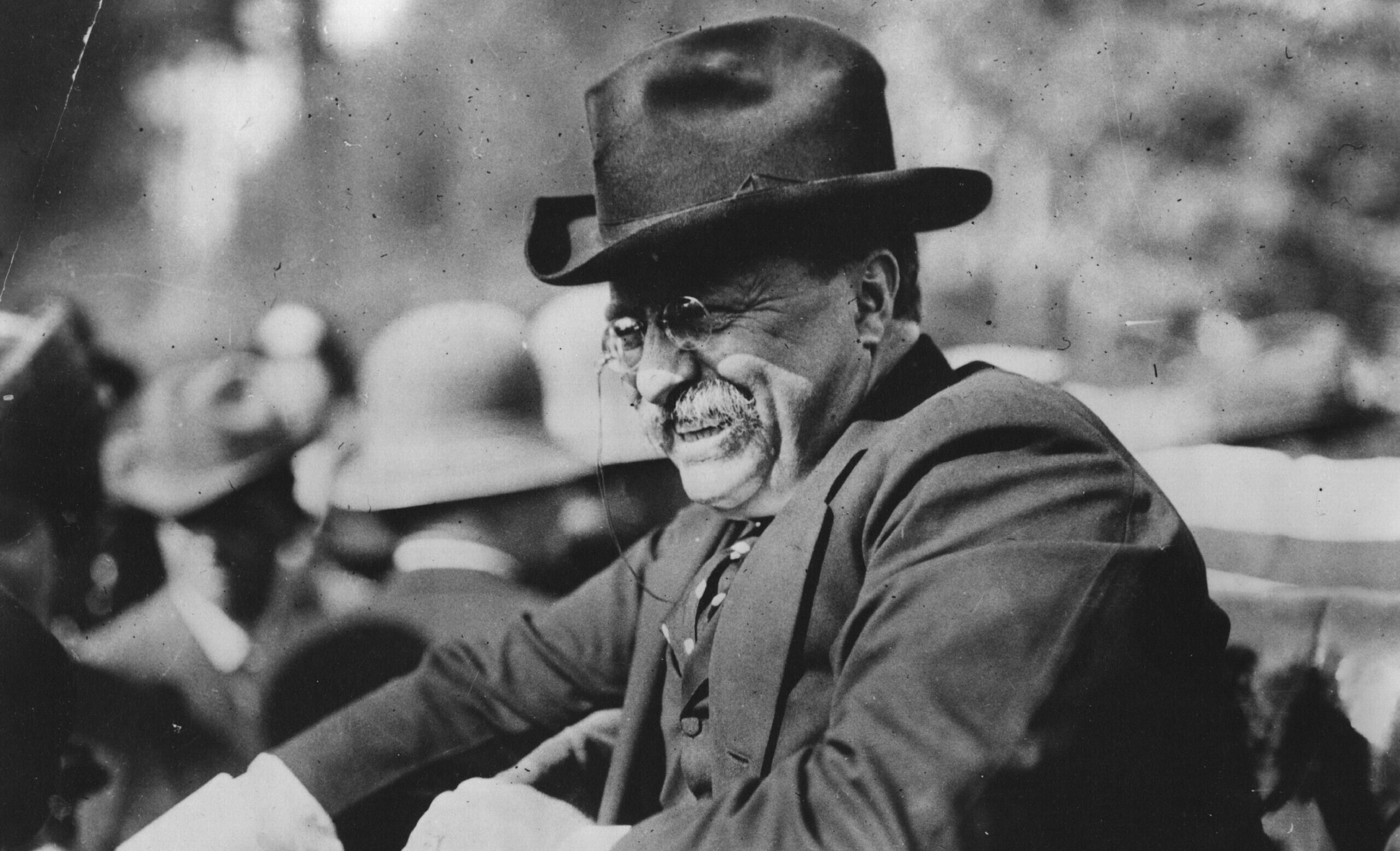On his post-presidential tour of Europe in 1910, Theodore Roosevelt raised eyebrows when he delivered his “Man in the Arena” speech in Paris, equating “the chief of blessings for any nation” with the willingness of the “average man” and the “average woman” to do their duty, tie the knot, and have plenty of children.
Further touching the nerves of his Sorbonne audience, the father of six added: “The first essential in any civilization is that the man and the woman shall be father and mother of healthy children. . . . No refinement of life, no delicacy of taste, no material progress, no sordid heaping up of riches, no sensuous development of art and literature, can in any way compensate for the loss of the great fundamental virtues.”
While the twenty-sixth president has no peer, two public intellectuals are taking up his fight today, debunking academic and media authorities that have labored for half a century to reconstruct Middle America into the likeness of Europe where marriage and childbearing are concerned—meaning less of both. While directing their arguments to younger Americans rather than to the liberal elite that has soured Millennials and Gen Z on the “great fundamental virtues,” both Brad Wilcox, a professor at the University of Virginia, and Timothy Carney, a journalist and resident senior fellow at the American Enterprise Institute, are responding to the erosion of historic U.S. family norms that also alarmed TR.
Back then, U.S. divorce rates had tripled from 1890 to 1910; birth rates had fallen more than 30 percent between 1880 and 1920, with more precipitous declines in the Northeast. Wilcox and Carney, however, confront a far direr situation: U.S. marriage and fertility rates have plummeted, with the latter below replacement levels every year save 2007 and 2008, when the Total Fertility Rate came up to 2.1 children per woman of childbearing age, the bare minimum for sustaining a nation.
Wilcox and Carney, fathers of fifteen children between them, also face a level of institutional and systemic prejudice that Roosevelt never had to confront, as the social sciences and news media have for decades produced and highlighted studies to score political points, from discounting marriage dividends through selection effects to misapplying findings from slivers of the population to America as a whole—such as the fraudster Alfred Kinsey’s data drawn from the sexual proclivities of criminals serving time.
Correcting the record, Wilcox’s Get Married and Carney’s Family Unfriendly navigate similar culture-war fronts with complementary emphases. Wilcox documents how the protective bond of matrimony delivers more than the sum of its parts—and far better than alternative arrangements—not only for husband and wife but also for their offspring. Carney identifies and critiques the myriad ways upper-middle-class America burdens and discourages the first purpose of marriage, the bearing and raising of children, by twisting a natural part of life into a daunting, by-the-book regimen that breeds anxiety at every turn. Previous generations answered the imperative to be fruitful and multiply without all the drama.
Carney, therefore, takes on newer challenges while Wilcox re-presents arguments that conservative scholars have been advancing for decades. A sociologist by profession, Wilcox takes a more quantitative approach, leaning on his research as director of the National Marriage Project while summarizing, with helpful charts in every chapter, empirical findings from nationally representative longitudinal surveys. Although not ignoring the numbers, Carney writes a more emotional and personal account: he’s a reporter who weaves into his narrative his own efforts helping his full-time homemaker wife, Katie, manage six kids in the rat-race suburbs of the nation’s capital. His book also relies on interviews with young people and parents across the country.
In Get Married, Wilcox attacks the academic myths that “demean and devalue” the fundamental unit of society, defending instead the instincts of ordinary Americans. Those commonsense understandings include that wedlock, relative to “flying solo,” means greater financial resources and household wealth over time; that married Americans, especially those with children, experience greater well-being and life satisfaction; and that elevating the needs of one’s spouse and children rather than looking out for oneself is key to achieving life’s best outcomes. Developing the last point, Wilcox refutes Stephanie Coontz, the queen bee of adversarial feminism, who has for years preached a contingent “maybe I do” view of marriage, claiming that keeping one’s options open, pledging less commitment, and having access to easy divorce is the route to “happiness ever after.”
Wilcox captures promising family dynamics among a certain number of Americans who have resisted the liberal, libertarian, and feminist malarkey.
Wilcox slams the “inverted hypocrisy” of liberals like Coontz who have “sabotaged our most fundamental social institution” but “figured out ways to protect their own families even as marriage flounders in the nation at large. So, strong and stable families remain the norm for the wealthy and well-educated,” but “in all too many poor and working-class communities, marriage is disappearing.” Wilcox is right: those who cheered the sexual revolution contributed to a gaping class divide over marriage never seen in our history.
Yet all is not lost. Wilcox captures promising family dynamics among a certain number of Americans who have resisted the liberal, libertarian, and feminist malarkey. Wilcox finds these “masters of marriage” among four overlapping categories of Americans: 1) the “Faithful” who regularly attend religious services, whether Protestant, Catholic, or Jewish; 2) politically conscious “Conservatives” or Republicans who consider social liberalism a threat to bourgeois American values; 3) career “Strivers” who, dominating the elite professions, may parrot progressive social attitudes but wouldn’t dare “put these views into practice in their own private lives”; and 4) the twenty million Asian Americans shaped by Eastern-style traditional family norms.
Carney’s Family Unfriendly has a scrappier edge that cuts against the grain, including into the four cohorts of Wilcox’s marriage masters, particularly the Strivers and the Asians. Carney proclaims that almost everything the professionals have told us about children and parenthood is a lie. Otherwise, American moms and dads following the twenty-first-century script would not find themselves in a rat race, tending to little Charlie and Anna at every step, stuck in “car hell” navigating the whirlwind of athletic programs, music lessons, and academic coaching. They are more stressed and burned-out than their 1960s counterparts, who had less formal education but raised twice as many children in houses half the size and on modest incomes. Everyone was happier when mental-emotional services had not yet become a growth industry.
His Irish sensibilities help Carney sift through the insanity; he tells parents to relax more, particularly when it comes to out-of-control organized sports, a bellwether of trouble in River City. The title of Chapter 1 sets the tone: “Have Lower Ambitions for Your Kids,” meaning avoid the “travel team trap” that consumes entire weekends and scale back most organized children’s activities, particularly during the grade-school years. Chapter 2 is “Leave Your Kids Alone,” refreshing advice that led the Carneys to push their Catholic parish to sponsor “Friday Night Lights,” where families of all ages would gather for cookouts in the ballfield adjacent to the church. As Carney explained to his priest, “We need a place to bring our children—and ignore them—while we hang out with other adults.”
Carney blames the “overplanned childhood” frenzy on the massive shift in aspirations among the college-educated toward their careers as the meaning of life. Exalting work over everything, the higher classes have anxiously pushed their résumé-building obsessions onto their offspring, robbing them of childhood in order to get ahead. Carney references Derek Thompson writing in the Atlantic on “workism.” But his book would have benefited more from engaging with the definitive assessment of the change in aspirations written at the turn of the century by his fellow conservative Brian Robertson, There’s No Place Like Work: How Business, Government, and Our Obsession with Work Have Driven Parents from Home.
Carney would certainly concur with Robertson that the script handed down from on high—that both parents should devote themselves to careers and bear at best two children—is the root of the family unfriendliness he finds toxic. By tearing up the script and freeing the mother from the full-time paid workforce, Carney’s family shows that everyone—“our kids, our dogs, me, Katie’s sisters, our schools, our parishes, and our neighborhoods”—can be better off. While conceding that this path may be less economically feasible than it once was, Carney is right that “America needs more stay-at-home moms like Katie.”
The Carneys have found that as a family grows, the experience becomes “less exhausting per child.” Aside from economies of scale, child-rich families enable parents to “lean on the older kids to entertain and take care of the younger kids.” And such fertility upticks can empower women to achieve aspirations that workism keeps out of reach. Summarizing work by the demographer Lyman Stone, Carney observes: “By any measure of what American women think is the ideal family size, they’re getting less, and the gap is growing between the number of babies women want and the number they end up with.”
Which raises the urgent question, how can the United States stop its demographic decline? Wilcox sees hope in his four categories of marriage-bullish Americans, and Carney finds it in his child-welcoming Catholic network around Washington, D.C., in well-to-do Orthodox Jewish communities that demand walkable neighborhoods, and in Utah and Iowa locales where Mormons raise traditional families. But what about the broader swath of the American public? That includes those who might in some ways resemble Wilcox’s Faithful or Conservatives but who are not intentionally religious or political. It also includes the laboring classes that Batya Ungar-Sargon characterizes as “struggling,” “floating,” or “rising” in her recent book Second Class: How the Elites Betrayed America’s Working Men and Women. Don’t members of this silent majority—who not only lack college degrees but also devout, tightly knit religious communities—warrant greater attention from these authors?
This oversight considerably weakens the argument of both otherwise promising books. These two model fathers will find a captive audience among those Americans who already enjoy success on the home front, especially among outlier conservatives with large families like their own. But by elevating religious and cultural affiliation above economics, they do not speak to the majority of Americans who may be Christian in name but are not devoutly religious.
Carney insists that “culture, more than politics and economics, determines how people live,” as if the categories can be easily detached. Wilcox does acknowledge the bitter results for working-class families of the gutting of domestic manufacturing: “Areas of the country most affected by the job losses—primarily the Midwest and Southeast—saw declines in new marriages, failing rates of fertility, and an increase in unwed motherhood.” He also shares Oren Cass’s concerns about “free-market fundamentalism” in the Republican party and blames both parties for “eviscerating the economics and social foundations of family life.”
Nonetheless, Wilcox falls back to the prevailing narrative among professional conservatives of blaming working-class men for not adapting to the new economic order—one they never voted for—or for being too distracted by video games or online pornography and gambling to think about the “fundamental virtues,” even as he details how “big education, big government, and big tech” have failed these men.
It’s possible the authors’ shortcomings have institutional origins, arising from policy choices rarely questioned by conservative think tanks like the American Enterprise Institute, which also claims Wilcox as a senior fellow. Indeed, AEI still advocates an interlocking set of policy prescriptions—free trade, outsourcing, open immigration, a tax-advantaged financial sector, deregulated U.S.-domiciled multinationals, and a low-wage “gig” economy—that played a leading role in the sidelining of the middle American family.
There has been little incentive for these conservatives to study the statecraft that shaped most of twentieth-century America: the prudently regulated national economy envisioned by Theodore Roosevelt and implemented by his cousin Franklin and midcentury successors like Dwight Eisenhower. Wilcox and Carney don’t examine that record or engage with Allan Carlson, the preeminent family policy expert whose books track how the New Deal—which integrated centrist economic policies with right-of-center social initiatives—yielded an unprecedented strengthening of the American family system. The family-centric America of the mid-twentieth century was a consequence of social and economic statecraft.
Wilcox and Carney call for raising the per-child tax credit, an innovation Carlson pioneered as a Reagan appointee to the National Commission on Children. But the two should also consider his 1989 paper “A Pro-Family Income Tax,” which looks at how the decidedly progressive postwar tax code performed wonders by linking taxation not just to income but to marital and parental status. Tax reforms designed in 1948 by a Republican Congress—which overrode a veto by Harry Truman—substantially favored wedlock over divorce and singleness, fertility over childlessness, and married households over other living arrangements, through full-income splitting and generous personal and dependent exemptions.
Wilcox and Carney may think marginal reforms—enhancements to the per-child tax credit, elevating maternal choice regarding day care, flexible employment and leave policies for working parents, and tweaks of welfare eligibility rules—can turn things around. But without drastic measures to restore the winning political economy that served as the cradle of the American Dream, all the suggested adjustments in Get Married and Family Unfriendly won’t end the flight from marriage and procreation that keeps TR’s “chief of blessings” out of reach.
















